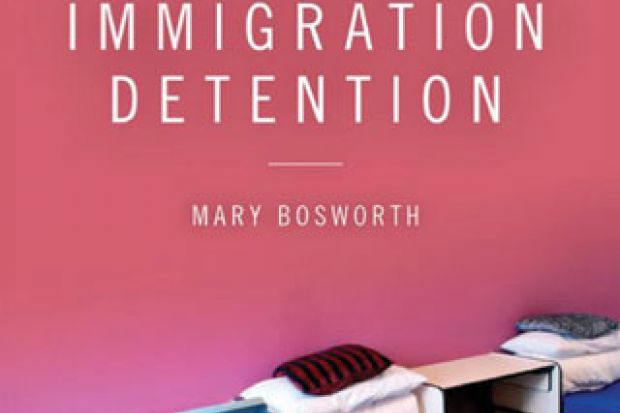At the end of March 2014, 2,991 foreign nationals were held in 10 immigration removal centres across the UK. These centres, some run by HM Prison Service but the majority by profit-making companies such as Serco, G4S and GEO, hold migrants prior to their removal to their countries of origin. Home Office statistics for last year, however, show that only 56 per cent of IRC inmates were removed from the centres. Most detainees in IRCs were held for less than a month, but 4,1 stayed between two and four months, 175 for between one and two years and 39 for longer.
These are some of the bald facts of immigration detention that are well known to academics, activists and, most obviously, to detainees. But until Mary Bosworth’s important book, critics of the system have lacked a rigorous analysis of how immigration detention works from the inside. With the exception of earlier work by Alexandra Hall, there have been no formal studies of the internal workings of detention centres and debate has relied on analyses of policy, official reports and the very important testimony of former detainees. Inside Immigration Detention adds a detailed, engaged and critical account of Bosworth’s team’s intensive fieldwork inside five centres: Morton Hall, Yarl’s Wood, Campsfield House, Colnbrook, Tinsley House and Brook House. Bosworth, a criminologist, combines testimony from detainees and staff to present a very human picture of daily life in these centres, their atmosphere, sights, sounds and smells.
IRCs are “prison-like” in that they isolate, confine and impose institutional rules on inmates who come from all over the world, and who often have a long history in the UK. They are also frequently violent places where self-harm and mental ill health are common. Crucially, such centres hold people for administrative reasons and, unlike prison, immigration detention is not time-limited; confinement feels arbitrary to detainees and release or removal depends on decisions made elsewhere. Although some custodial staff are sympathetic to the plight of detainees, their job is to deliver the Home Office contract, so they endeavour to maintain cordial working relationships until removal orders require them to oversee inmates’ forced removal. Custodial staff have no say in immigration cases and we learn here that the Home Office staff based in IRCs have no contact with detainees. The “case owners”, who have the power to detain, release or remove, are entirely absent from the centres.
Identity is a recurring theme. Detainees tell of their children, their stories and their attachment to the UK, challenging the logic of IRCs as “sites of estrangement” that recast the familiar as alien. These centres unmake, make and remake identities, transforming people who may have lived in Britain for years into strangers who do not belong and can be removed forcibly. Everyone in detention is isolated and many are vulnerable, still claiming refugee status as they face return to countries from which they fled or with which they have lost contact. In an environment in which personhood is denied, stereotypes loom larger than individuality, and we read of staff struggling to make sense of diverse populations by relying on broad categories such as previous time in prison, race, ethnicity and gender to demarcate and control the population. Detainees become “frozen” in detention, clinging to meaningful identities as parents, children or members of communities in defiance of the Home Office’s assertion that they must go “home” and that “home” is elsewhere.
Inside Immigration Detention would be an important book solely because of its intense engagement with people living and working in the hidden world of immigration detention, but its timeliness makes it more valuable still. Not only does it shine light on an expanding and profitable world of public-private partnerships – the newest IRC, The Verne in Portland, Dorset, will hold up to 580 male detainees by this autumn – but its findings will surely inform the ongoing parliamentary inquiry into immigration detention. Beyond its focus on IRCs, Bosworth’s work has resonance for immigration policy more broadly, as she argues that “the disconnect between highly securitized spaces and the allegedly transient (non-criminal) population they held, embodied the confusion surrounding border control in general”. Inside Immigration Detention challenges many assumptions that underpin migration policy and deserves a wide readership.
Inside Immigration Detention
By Mary Bosworth
Oxford University Press, 304pp, £60.00 and £29.99
ISBN 9780199675470 and 98722571
Published 18 September 2014
Register to continue
Why register?
- Registration is free and only takes a moment
- Once registered, you can read 3 articles a month
- Sign up for our newsletter
Subscribe
Or subscribe for unlimited access to:
- Unlimited access to news, views, insights & reviews
- Digital editions
- Digital access to THE’s university and college rankings analysis
Already registered or a current subscriber? Login





